What can I see in Tenerife? This is the first question most tourists ask themselves before visiting the island. We therefore recommend that you keep on reading as this is of interest to you.
What to see in Tenerife?
Tenerife is the largest and most extensive of the Canary Islands and according to a popular saying it contains a piece of each of the Canary Islands. The various Microclimates, height differences and landscapes contribute significantly. While the south is very dry and warm and therefore very desert-like, the North has a very lush subtropical, almost always green vegetation. Many beautiful holiday homes and Villas in Tenerife invite for a relaxing stay surrounded by impressive landscape
Teide Nationalpark
In the middle is „Father Teide“, the vulcano and the highest mountain of Spain with 3.718 m in one of the world’s most visited National Spanish Parks, the „Parque Nacional Cañadas del Teide“, comprising 18.990 m2. The Teide is surrounded by the „Cañadas“, the crater with a diameter of 17 km. In 2007, the crater and the vulcano became a Natural Heritage of the UNESCO. To 150 m from summit there is a cable car, and from there you can climb, with a permit, the summit via a path. This however requires a permit, you can apply for per Internet the Link is: Pico del Teide access permit Important is, especially in the winter months, to order well in advance.
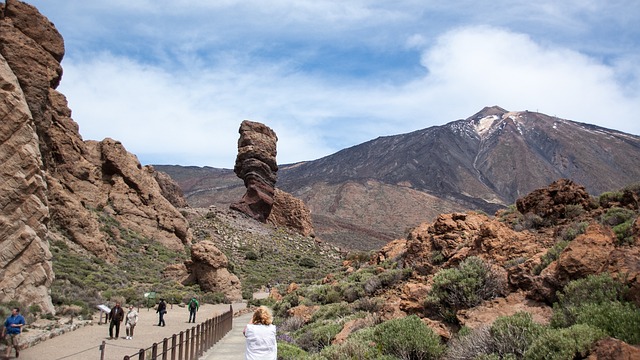
What to see in Santa Cruz de Tenerife
Santa Cruz is the Capital of Tenerife, located in the east of the island and adjacent to the Anaga-Mountains. Famous because of the grand Carnival, after Rio de Janeiro the biggest and most important of the world, and attracts every year hundredthousends of visitors. Since a few years the big Concerthal on the seashore is a Symbol, named „Auditorio de Adán Martin“, designed by the worldfamous architect Santiago Calatrava. In the oldtown is an eveningwalk in „Calle de la Noria“ by the Churchtower advisable. Many little Tappa-Bars, some with life-music and the premises of Carnivals-extras gives this pedestrian street a very nice local atmosphere. On the main square, the „Plaza de la Candelaria“, starts the well-known Shoppingarea from Santa Cruz, the „Calle de Castillo“, there and in the various side streets, you can find almost anything. The big Port is, both economically and touristy, very important to Santa Cruz. Increasingly and particularly during the wintermonths, Cruise ships use the Port, so that it is not uncommon, to receive 15.000 tourists in a day. Recommendable is a visit to the National History Museum, explaining the origins of the Guanchen. Parks and green areas are in abundance available. One of the most beautifuL Parks, the „Parque Garcia Sanabria“ is situated on the famous „Rambla“, an avenue that divides Santa Cruz from the Port.
What to see in Tenerife south?
Alcalá and Playa San Juan
Although the South of the Island very dry and barren is, one finds in the sunsecure South-West of the Island still very beautiful and original Fishervillages, like Alcalá and Playa San Juan with a very local atmosphere. In Alcalá for example one finds still beautiful holidayhomes directly on the Seaside, among other in historic buildings. Both these places are subject to the district of Guia de Isora, untill recently a very agricultural area from the south. Nowadays one finds there already two 5-star luxury Hotels with a renowned Golf course.
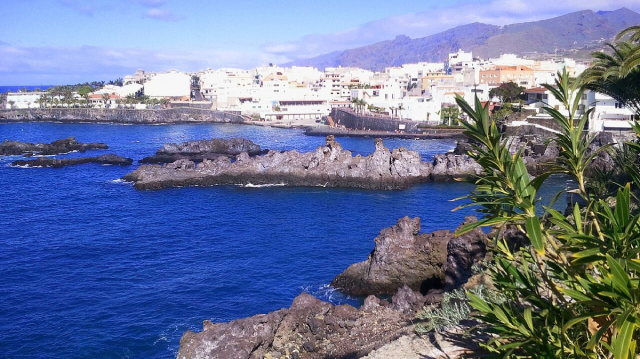
Photo from Dreol
Los Gigantes and Playa La Arena
The touristy places this zone are Los Gigantes, named after the steep Rocks, which rise up to 600 from the sea and Puerto de Santiago, a small resort along the lava coast. Both places are very small and quiet and come with black fine lava beaches. Los Gigantes and Playa de la Arena belong to the municipality of Santiago del Teide, that extends from the coast to the interior to a height of 925 m. Above los Gigantes you can even rent holidayhomes with pool and surrounded by bananaplantations.
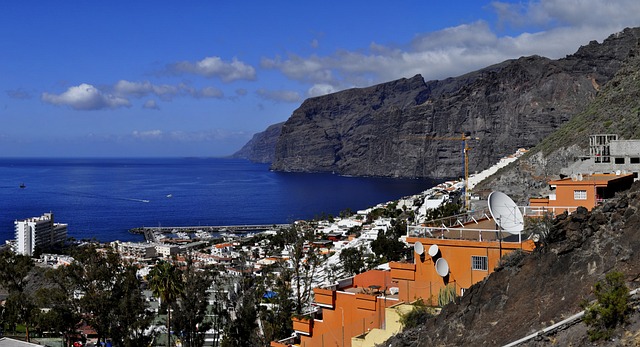
Los Cristianos and Playa de las Américas
Slightly to the east and only 20 km from the Airport South are Los Cristianos, Playa de las Americas and Costa Adeje, which merge into eachother and form the largest and most important tourist center of the Island. Countless holidayhomes, Apartments and Hotels all categories, stretch along the various artificial fine sandbeaches. Here you will find sport and leisure, two Waterparks, a Jungle Park, a new Golf course, various Shopping Centers, a high- performance sports center and ofcourse watersport activities of all kinds. Whales and delfines can be seen from various boats and catamaran, that depart amongst others from the harbour of Los Cristianos and from that port one can take a ferry to the neighbouring islands of La Gomera and El Hierro.
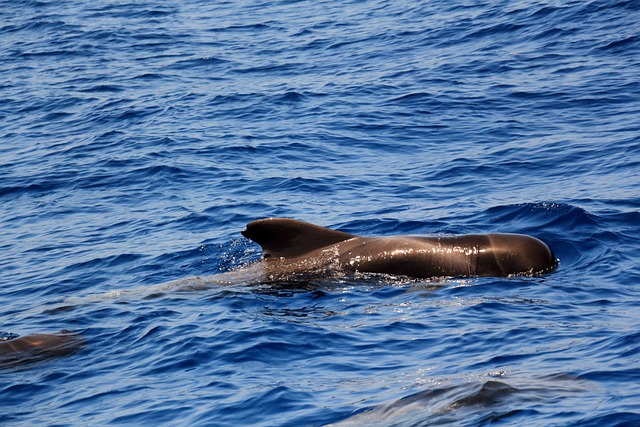
Arona and Vilaflor
From Los Cristianos a road takes you landward past Arona to Vilaflor, the highest village in Spain with 1.400 above sea level and adjacent to the National Park Teide. This small village still has a typical local atmosphere, with many traditional craft art places. Very popular is the, in all variations, natural obtained honey by the rich flora species from this area. This place is particularly popular as a starting point for hikers, to explore the National Park and surroundings by foot. Several small hotels and holidayhomes also invite you to a completely relaxed stay.
El Médano
About 5 km to the east is El Médano, the surfer paradise of the island. For those, who want to try it once, you will find several surfschools, where you can try out, for example, Wind-surfing, Wave- riding or Kite-surfing. The biggest and fine sandbeaches are divided by the „Montaña Roja“ (Red Mountain). Behind this mountain is the best known nudist beach from the island called „Playa de las Tejitas“. A very quiet and former fisher village, only busy during the summermonths as the natives are occupying their holidayhomes.
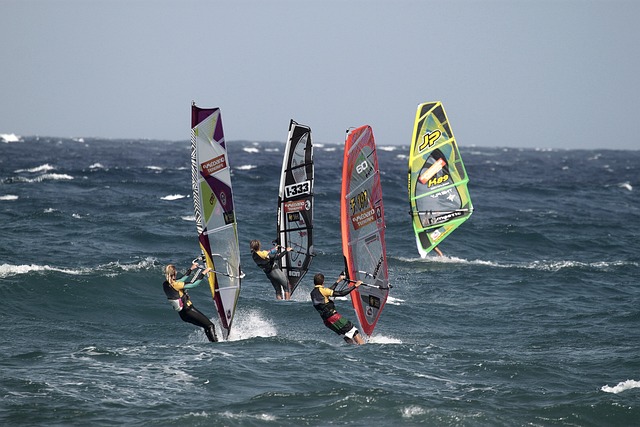
Candelaria
The most important pilgrimage from the Canary Islands is Candelaria, about 20 km from Santa Cruz. Each year thousends of native pilgrimage from the Canarys go to worship the Black Madonna, the holy virgin of Candelaria. Worth seeing on the road to the Churchsquare are the 9 big statues, which replicate the famous Guanches-kings, the Menceyes.
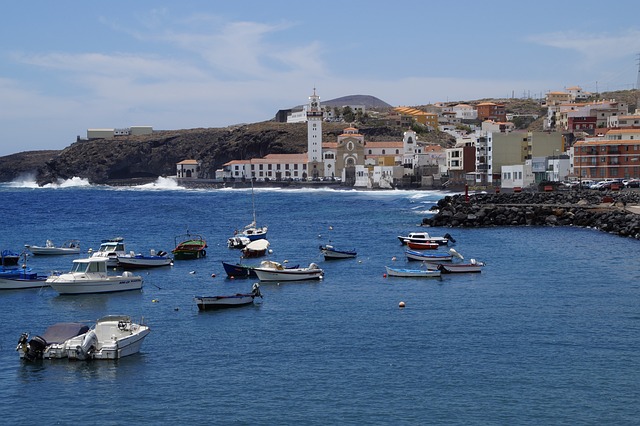
What to see in Tenerife north?
San Andrés and Igueste de San Andrés
The Nacional Park of Anaga, the Anaga-Mountains, belong to Santa Cruz and is the oldest district of the island. On the south-east coast, next to the fisher-village of San Andrés, is the beautiful beach “Playa de las Teresitas” located. This contemplative beach was built with sand from the Sahara and therefore with light-colored fine sand. The many palm trees along the beach makes this very appealing. From there you go via a steep serpentine road to the yet most unknown part of the Island, the little village of Igueste de San Andres. Located at the end of the road and worth a visit. Of this single road one moves only on foot paths. Divided by an evergreen Ravine with predominant Mango and Banana cultivation, the village leads to a pebble beach and a beautiful lonely beach with fine sand. A secret tip are several beach-cottages in this place, for example “La Casita de la Playa”, a beautiful beach-cottage in front of the sea-shore.
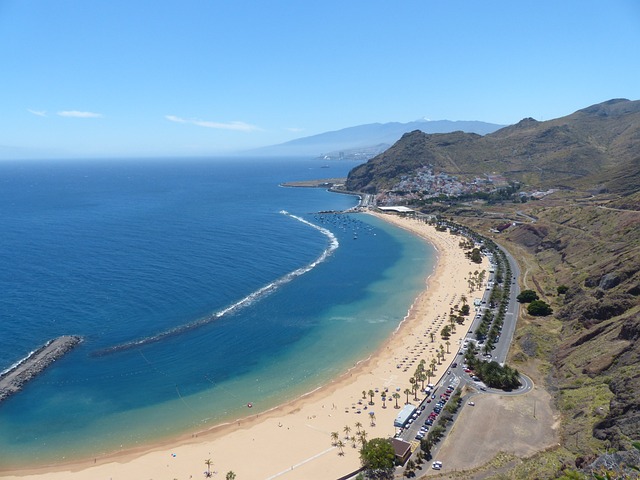
Taganana in the Anaga Mountains
On the Northsite from the Anagamountains is Taganana, a small and also unspoilt mountainvillage and at the coast the unknown and natural beaches „Benijos“ and „Almáciga“, the easterly part of the Island, where the road ends. It is recommended to drive back through the woods of Mercedes to La Laguna. This is a century old Forest with Pine-trees, Laurel, Broom and Heather. A beautiful Barbeque-place „Llanos los Viejos“ in the middle of the Forest, invites for a break.
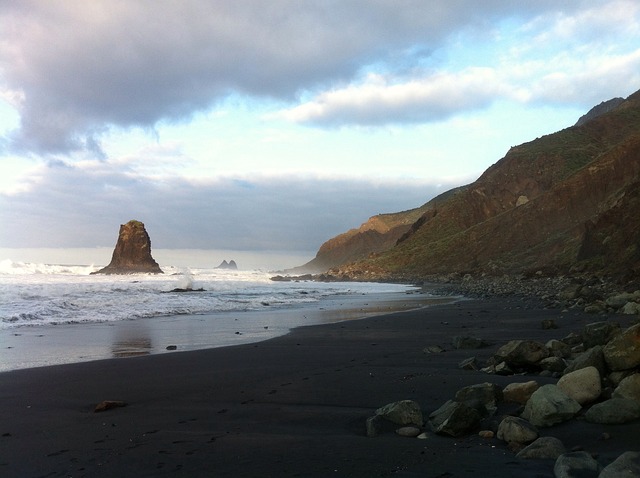
La Laguna
La Laguna is the second largest city on the island and since 2006 named World Heritage of the UNESCO and at the same time the University town of the Island. The inner city is preserved in colonial style and recommended is a walk through the different pedestrian streets with small and family shops, some of which still sustain. There is also the Cathedral and countless churches and monastery. Many small „Tascas“ invite for a tasting of wine and tapas and fine pattisseries with fine pastrys and sweet delicasies. Who wants to enjoy the evening with the locals, there is an extensive offer of small Bars, Pubs, Tascas, some with life-music. Also the cultural offer is in La Laguna, with many exhibitions, Concerts and the Theater „Teatro Real“. Worth seeing are in April the Easter Processions, yet after a hundreds years old tradition, the use is still accomplished, during day and night. One of the most important celebrations is also there in September „Fiesta del Cristo“.
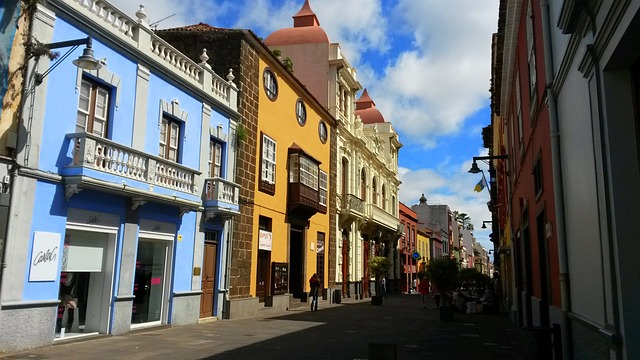
Bajamar and Punta del Hidalgo
To La Laguna belong the small holiday resorts Bajamar and Punta de Hidalgo. Bajamar is well known because of its various open seawaterpools along the newbuild beach-promenade and the small beach. Protected by the Anaga Mountains the climate is very mild and stable throughout the year. If looking for a quiet and relaxing holiday, it is possible to find a private holiday home, sometimes with pool, for reasonable rental rates. Between Bajamar and Punta del Hidalgo lies the beach „Playa El Arenal“ an extensive fine lonely lava beach, only visited by locals in the summermonths. Punta de Hidalgo is characterized in particular because of the Lavacoast and the tradional Fishrestaurants, with a daily supply at the small harbour. Because the road stops at the Lighthouse of Punta de Hidalgo, it is recommended for the way back via El Boquerón, to take the country road direction Tacoronte.
What to see in Tenerife, in the Acentejo Region
(Tacoronte, La Matanza, La Victoria, El Sauzal and Santa Úrsula)
Tacoronte is very popular among the locals because of the many small Tascas and Bars and countless all kinds of Restaurants. In the environment are also many renowned Restaurants. With one of the most important cultivated Wines from the Island, the excellent wines produced there are being exported over the whole world. Tacoronte is very long-drawn-out and extends to the coast, which has about 3 beaches. The most known beach is Playa La Arena in Mesa del Mar and Playa El Pris. And a small bay La Fuentecilla (Tagoro). Saturdays and Sunday morning there is a famous Fruit- and Vegetable Market, offering Honey, homemade jam and various tropical fruits, cheese and typical pastry. Tacoronte belongs with the Municipality La Matanza, La Victoria, El Sauzal and Santa Ursula to the Region of Acentejo (Comarca de Acentejo), with an appr.extension of 103 km2. This Region has a marked most family wine growing production. The special feature are the “Guachinches”, small family Bars and Restaurants, which are used for wine tasting and sale and where you can enjoy also typical home cooking and are usually located in the garage of the Familyhouses and therefore very simply furnished. This Region is historical because of the Slaughter (La Matanza) and the Victory (La Victoria) of the original inhabitants, the Guanches, by the Spaniards between the Years 1494 and 1495.
La Orotava
La Orotava is the biggest Municipality of Tenerife and covers appr. 207 m2, extending from the National Park Teide to the Coast. A large part of the National Park belongs to this Municipality. Particularly stunning is the Orotava Valley, which amongst other things thrilled Alexander von Humboldt. Driving on the motorway direction North, one will love this Valley and the prevailing vision of the Teide. Especially worth visiting is the historical Center of La Orotava with the 4 Churches, with the „Nuestra Señora de la Concepción“ declared National Monument. Further is the „Casa de los Balcones“, the „Liceo de Taoro“ and amongst others to visit, the City Hall Palace. One of the most important Celebrations is Corpus Christi, where the entire streets of the old town are provided with colorful floral carpets. These Floral-carpets are one of the most important troughout Spain and attracts every year hundreds of Visitors.
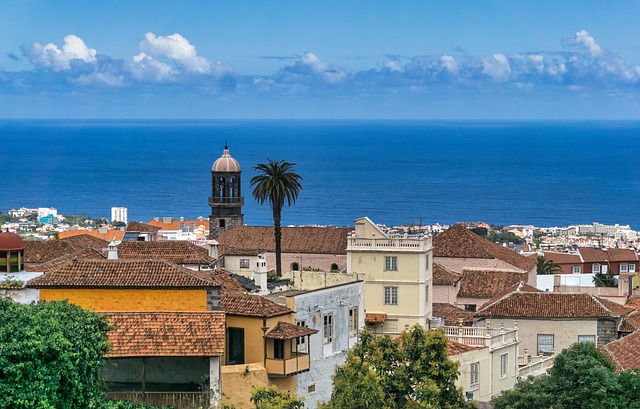
Puerto de la Cruz
Adjacent to La Orotava is Puerto de la Cruz, the cradle of tourism of the Canarys. In the midst of Bananaplantations, surrounded by sub-tropical Plants and Flowers is the Resort at the North-Coast of Tenerife. Locals and Tourists still live in a mixed City, which still has a typical Canarian Ambience. Especially on the weekend one can enjoy a colorful hustle and bustle at the Beach Boardwalk „Paseo de San Telmo“ or „Plaza del Charco“. Puerto de la Cruz has a small fisher harbour, the artificial beach „Playa Jardin“ and the famous Seawaterswimmingpools „Lago de Martianez“. Around the Plaza del Charco is the pedestrian Shopping zone with small shops, Bars and Restaurants, inviting for a stroll. The extensive offer of Holidayhomes, apart from many Hotels, is very large. Special is that, in the middle of the City you will find all Leisure Activities, for example The Loro Park, the Botanical Garden or The Taoro Park.
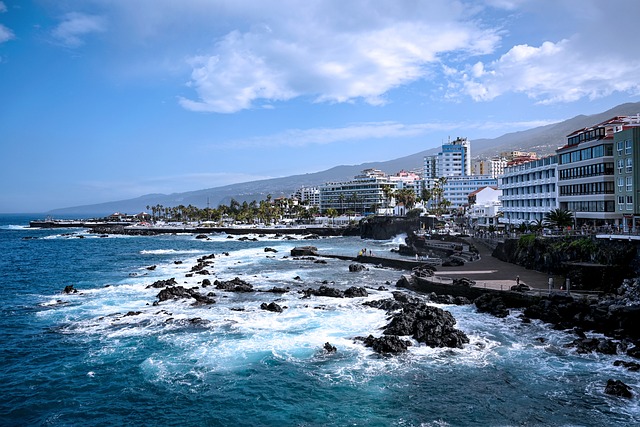
Los Realejos
West of Puerto de la Cruz and also in the Orotava-Valley, is the Municipality of Los Realejos. One says, that this Place has the most Celebrations of Spain. The Center in the lower part of town, has been named historically.
San Juan de la Rambla and La Guancha
Adjacent to Los Realejos one comes to the Coast to San Juan de la Rambla. A still very typical small Village, where one finds very comfortable Villas for a quiet and relaxed Holiday. In the inner country is La Guancha that still lives mainly from agriculture. Here one is also surprised by beautiful Villas.
What to see in Icod de los Vinos, Tenerife
Icod de los Vinos is the former Purchasing- and Administrative-Center of the Westcoast of the Island. Famous is the thousand years old Dragontree, „El Drago“, named National Monument in the Year 1917 and daily visited by hundreds of Tourists. Adjacent is the Butterflygarden and the Historical Oldtown Center, with many small and colorful shops. The black and fine lava beach of San Marcos with the small harbour and holidayhomes make it a very attractive place in the North for holidaymakers. Icod de los Vinos is a very popular and private Tourist Resort. You can still rent from private owners, very beautiful and preserved Country Houses. To Icod belongs the „La Cueva del Viento“, the 3rd worldwide biggest Vulcanic, and the biggest from Europe with 18m length.
Garachico, Los Silos, Buenavista and El Tanque
Recommendable is a detour in the so-called “Isla Baja”, the nortwest-coast of the Island, to which Garachico, Los Silos, Buenaviste del Norte and El Tanque, belong. This Region distinguishes because of the original way of life. Garachico is a picturesque Fishervillage, visited by the locals in the weekend for a stroll or having a meal. A Spectacle is, when the wild North Sea splashes up on the Beach Promenade. To Garachico belongs also the small resettlement “La Caleta de Interián” with a new landscaped sandy beach, where you can rent apartments in first line. Los Silos and Buenavista deL Norte are still very unspoilt Places, and live mainly from Agriculture. A Golf course and Hotel complex were only recently, build and discreetly integrated in the Landscape. Sought-after are the Private Holidayhomes, to enjoy in tranquility this Idyll. A detour to the Lighthouse at the Northwest Point of the Island, to “La Punta del Teno” and the protected Coast, are very advisable. El Tanque is one of the three Municipalitys of the Island without a Coastline. Dominated by a predominantly fresh and moist Climate, one finds “Puerto de Erjos”, the North-South-Border of the Island, with an incredible Contrast both climatic and landscape.
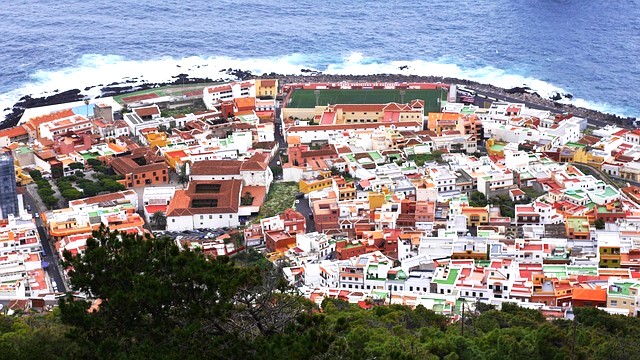
Let us know in comments what else you think is a must to see in Tenerife.
